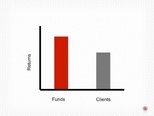
By Tom Bradley
In a post last week, Larry Swedroe wrote about one of our favourite topics – the behavioral gap. I’m referring of course to investor behavior, not child rearing or post-Stanley Cup rioting. In an investment context, the term refers to the gap in returns between mutual funds and the investors that buy them. In study after study, it’s been shown that investors don’t do as well as the funds they invest in.
The reasons for this are many, but generally come down to two main ones. First, investors hurt themselves by buying what did well in the recent past (buy high) and selling what’s underperformed (sell low). These actions lead to the second reason, which is that investors trade too much and incur extra costs.
What prompted Larry’s article was new data (U.S.) from Morningstar that shows that gaps persisted over the last 3 years. In the U.S., international and bond fund categories, it varied from 0.5% to 2.0% per year. Only in the balanced fund category was the gap negligible.
In the piece, there is a quote from Warren Buffett who says, “We continue to make more money when snoring than when active.”
I started by saying it’s our favourite topic because Steadyhand is all about eliminating the gap, whether it be our philosophy, communications, fund managers or company name. And we track both fund returns (time-weighted returns) and client returns (dollar-weighted) to see how we’re doing. While the data is impressive, we aren’t able to release it yet because the record is too short. Four years of rapid growth is not a meaningful enough sample.
In the meantime, we’ll encourage our clients and readers to mind the gap – trade infrequently and re-balance when needed.

